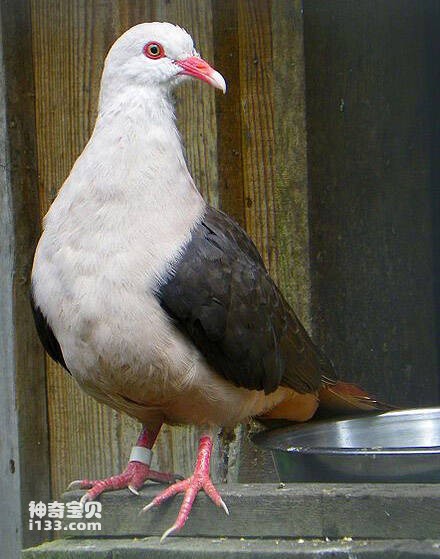Nesoenas mayeri
IUCN
LCBasic Information
Scientific classification
- name:Nesoenas mayeri
- Scientific Name:Nesoenas mayeri,Pink Pigeon
- Outline:Landfowl
- Family:
Vital signs
- length:About 32 cm
- Weight:Around 350g
- lifetime:No textual research information is available
Feature
The feathers on the head and lower body are pink, as are the feet and beak
Distribution and Habitat
Pink pigeons are found only on the Mascarene Islands of Mauritius. They prefer the evergreen forests of the highlands, and there are also communities in coastal forests. But the destruction of forests has decimated their numbers.
Appearance
Adult pink pigeons are about 32 cm long and weigh 350 grams. Their head and underbody feathers are pink, as are their feet and beak. The wings are dark brown and the tail is broad and reddish brown. The eyes are dark brown, with red circles without feathers. The young pigeon's fur is white and cannot be seen.
Details
Pink Pigeon (Nesoenas mayeri) was originally classified as a pigeon in the genus Pigeon, but DNA analysis has shown that it is closest to the Falkisland turtle dove, so it is classified as a pigeon. It was later found that these two species did not belong to the genus Doves or pigeons, so they were classified into the new genus Pink Pigeons.

Pink pigeons eat buds, flowers, leaves, shoots, fruits and seeds of native plants, as well as insects.
The breeding season for pink pigeons is August to September, but they can also be bred all year round. The male pigeon steps and bows to show his love to the female. They are generally monogamous. Their nests are thin, and they will scratch the territory of nearby areas. The female will lay two eggs at a time, the eggs are white, and the incubation period is 2 weeks. The males incubate their eggs during the day, while the females incubate their eggs at night or in the morning.
Due to habitat destruction and invasive predators, only 10 pigeons were left in 1991. Breeding and introduction programs have led to a resurgence in their numbers, to around 360 in 2005. There are more males than females because they live longer.
Listed in the International Union for Conservation of Nature (IUCN) ver 3.1:2010 Red List of Birds - Endangered (EN).
Listed in Appendices I, II and III of the Convention on International Trade in Endangered Species of Wild Fauna and Flora (CITES) 2019 edition Appendix III.
CITES:III Mauritius.
Protect wild animals and eliminate wild meat.
Maintaining ecological balance is everyone's responsibility!








